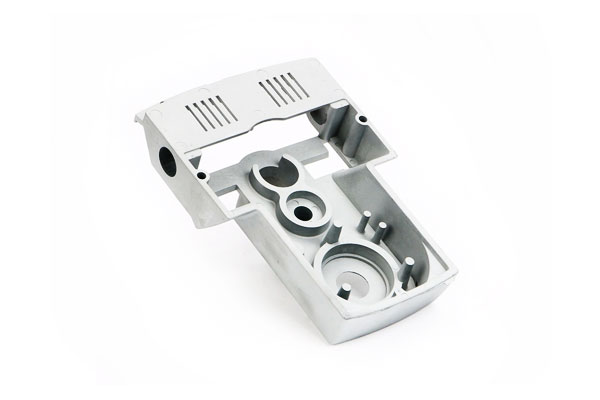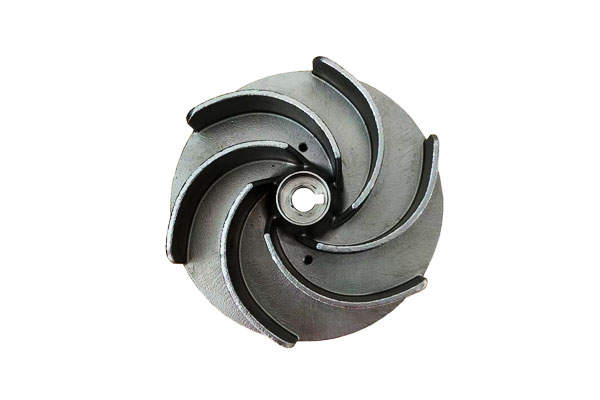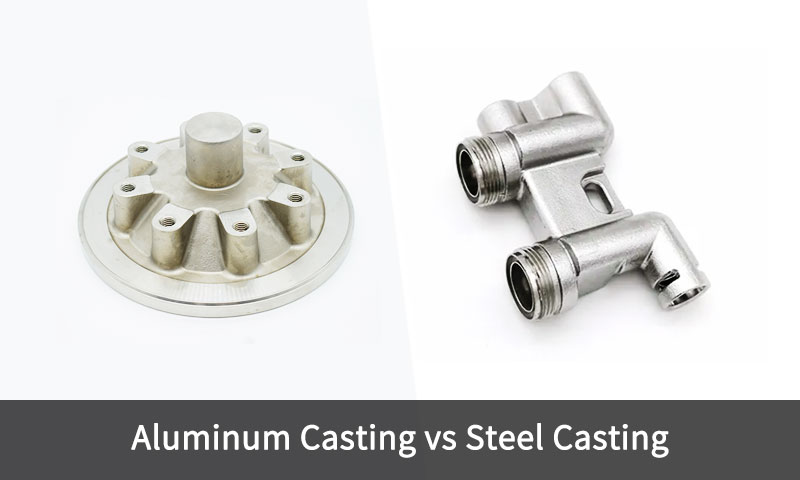1. Įvadas
Aluminum vs Steel Casting — choosing between these two foundational materials shapes component performance, cost and manufacturability across industries from automotive to energy.
This comparison is not merely about metal chemistry: it encompasses density and stiffness, Šiluminis elgesys, casting process compatibility, secondary processing (terminis apdorojimas, Paviršiaus inžinerija), lifecycle cost and application-specific reliability.
Engineers and purchasers must therefore evaluate the entire system—loading, temperatūra, environment, production volume and finish requirements—before specifying a metal and casting route.
2. Fundamental Material Differences Between Aluminum vs Steel
At the core of aluminum vs. steel casting lies a fundamental metallurgical and physical contrast that directly affects how each material behaves during casting, apdirbimas, ir tarnyba.
| Nuosavybė | Aliuminis (Pvz., Al-i alėjos) | Plienas (Pvz., carbon or low-alloy steels) | Inžinerinės pasekmės |
| Tankis (g/cm³) | 2.70 | 7.85 | Aluminum is ~65% lighter, offering major weight savings for transportation and aerospace. |
| Lydymosi taškas (° C.) | 615–660 | 1425–1540 | Aluminum’s low melting point enables easier casting and lower energy consumption; steel requires specialized furnaces. |
| Šilumos laidumas (W/m · k) | 120–180 | 40–60 | Aluminum dissipates heat efficiently—ideal for engines, Šilumokaičiai, ir elektronika. |
| Specifinė jėga (MPa/ρ) | ~100–150 | ~70–90 | Despite lower absolute strength, aluminum’s strength-to-weight ratio surpasses that of steel. |
| Elastinis modulis (GPA) | 70 | 200 | Steel is stiffer, providing better rigidity under load and vibration. |
Atsparumas korozijai |
Puiku (forms Al₂O₃ layer) | Kintamasis; prone to rust without coatings | Aluminum resists oxidation naturally, while steel needs surface protection (Tapyba, dengimas, or alloying with Cr/Ni). |
| Aparatas | Puiku | Vidutinio sunkumo iki sunkus | Aluminum’s softness allows easy machining and shorter cycle times; steel requires tougher tooling. |
| Perdirbimas | >90% recoverable | >90% recoverable | Both materials are highly recyclable, though aluminum’s remelting requires less energy (5% of primary production). |
| Casting Shrinkage (%) | 1.3–1.6 | 2.0–2.6 | Steel shrinks more during solidification, demanding larger allowances and more complex gating/feeding systems. |
| Kaina (apytiksliai., USD/kg) | 2.0–3.0 | 0.8–1.5 | Aluminum is more expensive per kilogram, but savings in weight and processing can offset total lifecycle costs. |
3. What Is Aluminum Casting?
Aliuminis liejimas is the process of shaping molten aluminum or aluminum alloys into complex, near-net-shape components using molds.
It is one of the most widely used metal casting processes globally—accounting for over 50% of all nonferrous castings—due to aluminum’s excellent castability, mažas tankis, ir atsparumas korozijai.

Apžvalga
In aluminum casting, Išlydytas aliuminis (paprastai tarp 680–750°C) is poured or injected into a mold cavity where it solidifies into the desired geometry.
Aluminum’s low melting point and high fluidity make it ideal for both mass-production methods (like die casting) ir Aukšto tikslumo programos (like investment casting).
Key Features of Aluminum Casting
- Lengvas ir didelis stiprumo ir svorio santykis:
Aluminum castings offer excellent mechanical performance while being about trečdalis plieno svorio. - Geras atsparumas korozijai:
Plonas, savigyda aluminum oxide layer (Al₂o₃) protects against oxidation and most atmospheric or marine corrosion. - Puikus šiluminis ir elektrinis laidumas:
Suitable for applications like Šilumokaičiai, korpusai, and electric components. - Perdirbimas:
Aluminum can be recycled indefinitely without degradation, reducing production energy by up to 95% compared to primary smelting.
Common Aluminum Casting Processes
| Liejimo metodas | Aprašymas | Tipiškos programos |
| Mirti liejimas | High-pressure injection of molten aluminum into steel dies; yields precise, Plonos sienos dalys. | Automobilių dalys (Pavarų korpusai, skliaustai), Vartojimo elektronika. |
| Smėlio liejimas | Molten metal poured into sand molds; suitable for larger, lower-volume parts. | Variklio blokai, kolektoriai, aviacijos ir kosmoso korpusai. |
| Investicijų liejimas | Ceramic molds from wax patterns; ideal for fine details and tight tolerances. | Aviacijos ir kosmoso turbinos komponentai, Medicinos prietaisai. |
| Nuolatinis pelėsių liejimas | Reusable metal molds; good surface finish and dimensional control. | Stūmokliai, Ratai, ir jūrų komponentai. |
| Išcentrinis liejimas | Uses centrifugal force to distribute molten metal; tankus, struktūra be defektų. | Vamzdžiai, rankovės, and rings. |
Aliuminio liejimo pranašumai
- Lengvas: Reduces component weight by 30–50% vs. plienas, improving fuel efficiency (automobilių) or payload capacity (kosmoso).
- Energijos efektyvumas: Melting aluminum requires 60–70% less energy than steel (570° C vs.. 1420° C.), lowering processing costs by 20–30%.
- Atsparumas korozijai: Eliminates the need for coatings (Pvz., dažyti, galvanizavimas) Daugelyje aplinkų, reducing maintenance costs by 40–50%.
- High-Volume Viability: Die casting enables production of 1000+ parts/day per machine, meeting consumer goods demand.
Disadvantages of Aluminum Casting
- Mažesnis stiprumas: Tempimo stiprumas (150–400 MPa) is 50–70% lower than high-strength steel, limiting use in heavy-load applications.
- Poor High-Temperature Performance: Retains only 50% of room-temperature strength at 250°C, making it unsuitable for engine exhaust or power plant components.
- Poringumo rizika: Die-cast aluminum is prone to gas porosity (from high-pressure injection), restricting heat treatment options (Pvz., T6 temper requires vacuum processing).
- Higher Raw Material Cost: Primary aluminum costs $2,500–$3,500/tonne, 2–3x more than carbon steel.
Industrial Applications of Aluminum Casting
Aluminum casting is widely used across multiple industries due to its combination of Lengvas dizainas, Aparatas, ir atsparumas korozijai:
- Automobiliai: Variklio blokai, Transmisijos korpusai, Ratai, and suspension arms.
- Aviacijos ir kosmoso: Skliaustai, konstrukcinės jungiamosios detalės, Kompresoriaus korpusai.
- Elektronika: Šilumos kriauklės, Variklio korpusai, gaubtai.
- Vartojimo prekės: Prietaisai, elektriniai įrankiai, baldų aparatūra.
- Marine and Renewable Energy: Sraigtai, korpusai, ir turbinų ašmenys.
4. What Is Steel Casting?
Steel casting is the process of pouring molten steel into a mold to produce complex, high-strength components that cannot be easily fabricated or forged.
Unlike aluminum, steel has a Aukštesnis lydymosi taškas (≈ 1450–1530°C) and greater tensile strength, todėl tai idealiai tinka load-bearing and high-temperature applications such as machinery, infrastructure, ir galios generavimas.

Apžvalga
In steel casting, carefully alloyed molten steel is poured into either expendable (smėlis, investicija) or permanent molds, where it solidifies into a shape close to the final part.
Because steel shrinks significantly upon cooling, precise temperature control, „Gating Design“, and solidification modeling yra kritiški.
Steel castings are known for their mechaninis tvirtumas, Poveikio atsparumas, ir struktūrinis vientisumas, particularly under harsh service conditions.
Key Features of Steel Casting
- Exceptional Strength and Toughness:
Yield strengths often exceed 350 MPA, with heat-treated alloys reaching over 1000 MPA. - High-Temperature Capability:
Retains strength and oxidation resistance up to 600–800°C, depending on composition. - Versatile Alloy Selection:
Includes Anglies plienai, Žemo lydinio plienai, nerūdijantis plienas, and high-manganese steels, each tailored for specific environments. - Suvirinamumas ir apdirbamumas:
Cast steels can be post-processed effectively—machined, suvirintas, and heat-treated to enhance performance.
Common Steel Casting Processes
| Liejimo metodas | Aprašymas | Tipiškos programos |
| Smėlio liejimas | Molten steel poured into bonded sand molds; Idealiai tinka dideliam, Sudėtingos dalys. | Vožtuvo kūnai, siurblio korpusai, machinery housings. |
| Investicijų liejimas | Ceramic molds formed from wax patterns; yields excellent accuracy and surface finish. | Turbinos ašmenys, Chirurginės priemonės, aviacijos ir kosmoso dalys. |
| Išcentrinis liejimas | Rotational force distributes molten steel evenly; produces dense cylindrical components. | Vamzdžiai, Lineriai, Guolių lenktynės. |
| Korpuso pelėsio liejimas | Uses thin resin-coated sand molds; allows higher precision and smoother surfaces. | Mažos variklio dalys, skliaustai. |
| Nuolatinis liejimas | For semi-finished steel products like slabs and billets. | Raw material for rolling and forging. |
Advantages of Steel Casting
- Aukščiausia jėga & Tvirtumas: Tempimo stiprumas (iki 1500 MPA) ir paveikti kietumą (40–100 J) make it irreplaceable for structural safety (Pvz., tilto komponentai, Automobilių važiuoklė).
- Aukštos temperatūros našumas: Operates reliably at 400–600 ° C. (vs. aluminum’s 250°C limit), suitable for jet engine casings and power plant boilers.
- Low Raw Material Cost: Carbon steel costs $800–$1200/tonne, 60–70% less than primary aluminum.
- Atsparumas nusidėvėjimui: Heat-treated steel (Pvz., 4140) has surface hardness up to 500 Hb, reducing replacement frequency in abrasive applications by 50–70%.
Disadvantages of Steel Casting
- High Weight: Density 2.7x that of aluminum increases fuel consumption (automobilių) or structural load (pastatai).
- High Energy Use: Melting steel requires 25–30 MWh/tonne (vs. 5–7 MWh/tonne for aluminum), increasing processing costs by 40–50%.
- Jautrumas korozijai: Carbon steel rusts in moist environments (Korozijos greitis: 0.5–1,0 mm per metus in salt spray), requiring coatings (Pvz., galvanizavimas) that add $1.5–$2.5/kg to costs.
- Poor Machinability: Hardness requires specialized tools, didėjantis apdirbimo laikas 30–50% vs. aliuminis.
Industrial Applications of Steel Casting
Steel castings dominate industries demanding stiprybė, ilgaamžiškumas, ir šilumos atsparumas:
- Statyba & Kasyba: Excavator teeth, Smulkintuvo dalys, track links.
- Energija & Energijos generavimas: Steam turbine casings, vožtuvo kūnai, Branduoliniai komponentai.
- Aliejus & Dujos: Drill heads, pipeline valves, kolektoriai.
- Transportas: Train couplers, Pavarų korpusai, heavy-duty engine blocks.
- Aviacijos ir kosmoso & Gynyba: Nusileidimo įrankis, konstrukcinės jungiamosios detalės, armor components.
5. Išsamus palyginimas: Aluminum vs Steel Casting
Process fit and part geometry
- Plonos sienos, kompleksas, didelės apimties dalys: aluminum die casting is optimal (HPDC).
- Didelis, Sunkus, load-bearing parts: steel/spheroidal graphite (Kunigaikščiai) iron and cast steels via sand casting are preferred.
- Medium volume with high integrity requirements: low-pressure aluminum or investment casting steels depending on strength needs.
Mechanical performance & Post apdorojimas
- Terminis apdorojimas: cast steel can be quenched & tempered to obtain high strength and toughness; aluminum alloys have age-hardening routes but reach lower maximum strengths.
- Surface engineering: aluminum readily anodizes; steel can be nitrided, carburized, induction hardened or coated with hard substances (keramika, kietas chromas).
Kainos vairuotojai (typical considerations)
- Material cost per kg: aluminum raw metal tends to be priced higher per kg than ferrous scrap/steel, but part mass reduces required amount.
- Įrankiai: die casting dies are expensive (high initial amortization) but low per-part cost at volumes >10k–100k; sand tooling is cheap but per-part labor higher.
- Apdirbimas: aluminum machines faster (higher removal rates), lower tool wear; steel requires harder tooling and more machining time—raises total cost especially for small batches.
Gamyba & defect modes
- Poringumas: HPDC aluminum can develop gas and shrinkage porosity; permanent-mold and low-pressure reduce porosity.
Steel castings can suffer inclusions and segregation; controlled melting and post-HT reduce defects. - Matmenų valdymas: die cast aluminum attains tight tolerances (± 0,1–0,3 mm); sand cast steel tolerances are looser (±0.5–2 mm) without post-machining.
Aplinka & life-cycle
- Perdirbimas: both metals are highly recyclable. Recycled aluminum uses a small fraction (~5–10%) of the energy of primary smelting; recycled steel also has large energy savings compared to virgin iron.
- Use-phase: lightweight aluminum can reduce fuel consumption in vehicles — a system-level environmental benefit.
Lentelė: Aluminum vs Steel Casting — Key Technical Comparison
| Kategorija | Aliuminio liejimas | Plieninis liejimas |
| Tankis (g/cm³) | ~2.70 | ~7.80 |
| Lydymosi taškas (° C. / ° F.) | 660° C. / 1220° F. | 1450–1530°C / 2640–2790°F |
| Stiprybė (Tempimas / Derlius, MPA) | 130–350 / 70–250 (AS-CAST); iki 500 po terminio apdorojimo | 400–1200 / 250–1000 (priklausomai nuo laipsnio ir terminio apdorojimo) |
| Kietumas (Hb) | 30–120 | 120–400 |
| Elastinis modulis (GPA) | 70 | 200 |
| Šilumos laidumas (W/m · k) | 150–230 | 25–60 |
| Elektrinis laidumas (% IAC) | 35–60 | 3–10 |
| Atsparumas korozijai | Puiku (Natūralus oksido sluoksnis) | Variable — requires alloying (Kr, Į, MO) arba danga |
| Atsparumas oksidacijai (High-Temp) | Ribotas (<250° C.) | Geras iki puikus (up to 800°C for some alloys) |
| Aparatas | Puiku (minkšta, easy to cut) | Vidutinio sunkumo ir vargšo (sunkiau, Abrazyvinis) |
| Liejamumas (Sklandumas & Susitraukimas) | High fluidity, Žemas susitraukimas | Lower fluidity, higher shrinkage — needs precise gating |
| Svorio pranašumas | ~65% lighter than steel | Heavy — suitable for structural loads |
Paviršiaus apdaila |
Lygus, good detail reproduction | Rougher surfaces; may need machining or shot blasting |
| Heat Treatment Flexibility | Puiku (T6, T7 tempers) | Platus (atkaitinimas, gesinimas, grūdinimas, normalizavimas) |
| Perdirbimas | >90% recycled efficiently | >90% recyclable but requires higher remelting energy |
| Production Cost | Lower energy, greitesnis ciklo laikas | Higher melting cost and tool wear |
| Tipiniai nuokrypiai (mm) | ±0.25 to ±0.5 (liejimas štampuojant); ±1.0 (Smėlio liejimas) | ±0.5–1.5 depending on process |
| Environmental Footprint | Žemas (especially recycled aluminum) | Higher CO₂ and energy footprint due to high melting point |
| Tipiškos programos | Automobilių ratai, korpusai, aviacijos ir kosmoso dalys, vartojimo prekės | Vožtuvai, Turbinos, Sunkiosios mašinos, struktūriniai komponentai |
6. Išvada
Aluminum and steel castings solve different engineering problems.
Aluminum excels where lengvas svoris, Šilumos laidumas, surface quality and high production rates matter.
Plienas (and cast irons) dominate where Didelė jėga, standumas, atsparumas nusidėvėjimui, toughness and elevated temperature performance yra reikalingi.
Good material selection balances functional requirements, Kaina (total life cycle), producibility and finishing.
In many modern designs hybrid solutions appear (steel inserts in aluminum castings, clad or bimetallic components) to exploit the strengths of both metals.
DUK
Kuris yra stipresnis: cast aluminum or cast steel?
Cast steel is significantly stronger—A216 WCB steel has a tensile strength of 485 MPA, 67% higher than A356-T6 aluminum (290 MPA).
Steel also has far greater toughness and wear resistance.
Can cast aluminum replace cast steel?
Only in applications where weight reduction is prioritized over strength (Pvz., automotive non-structural parts).
Steel is irreplaceable for high-load, high-temperature components (Pvz., Turbinų korpusai).
Which is more corrosion-resistant: cast aluminum or cast steel?
Cast aluminum is more corrosion-resistant in most environments (Korozijos greitis <0.1 mm per metus) vs. Anglies plienas (0.5–1,0 mm per metus).
Stainless steel castings match aluminum’s corrosion resistance but cost 2–3x more.
Which casting process is best for aluminum vs. plienas?
Aluminum is ideal for die casting (Aukštos apimties) and sand casting (pigūs).
Steel is best for sand casting (Didelės dalys) ir investicijų liejimas (kompleksas, high-tolerance components). Die casting is rarely used for steel.


